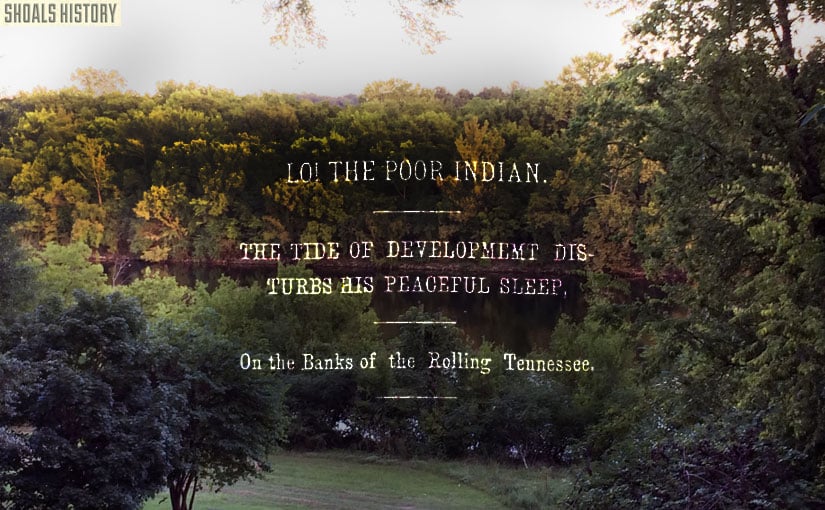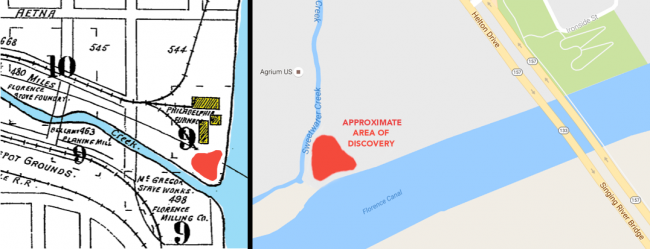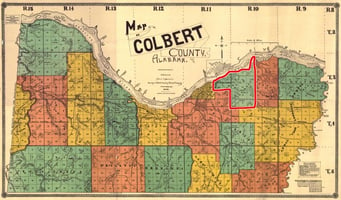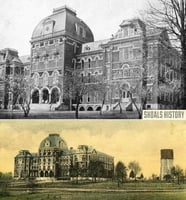Meet Joseph Paul Phelps, a man who made significant contributions to the world of photography in...
Ancient Native American burial mound uncovered in East Florence, Alabama

August 15, 1891
Gentlemen: We have been digging up prehistoric men for about a week, thick skulled fellows. Today we discovered a skull in place that ante-dates the others by a “long spell.” I have been making measurements but am entirely unequal to the task. Can’t you have a good surgeon come here and investigate the subject while it can be done. I think it will prove one of the most interesting cases of the kind.
Yours truly,
DANIEL KING
August 2016 marked 125 years since the accidental discovery of an ancient Native American burial mound picturesquely lying in the fork of Sweetwater Creek and the Tennessee River in East Florence. Workers from the Philadelphia Furnace, located just West of the Florence end of today’s Singing River Bridge, were digging a pit to dump their rubbish, when they began uncovering prehistoric human remains. A total of eight graves were found in an ancient burial mound that measured four feet high and thirty feet in diameter. All the bodies, except for one, were buried with their heads toward the Northeast.
Below, I have included a complete transcription of the Florence Times article that ran on August 15th, 1891. More research needs to be done to find out if any further documentation was made, any more excavations were uncovered, and whether or not the bones have been preserved with city records. My gut feeling is that this entire discovery has been completely forgotten in the name of ‘progress’ as the workers made way for the Philadelphia Furnace’s refuse dump.

—
Ancient Burial Mound story TRANSCRIPTION:
August 15, 1891 – The Florence Times
In compliance with the above invitation from Mr. King, the General Manager of the Iron Department of the Cotton and Iron company, a Times representative, in company with Dr. Percy Price, went down to the Philadelphia Furnace on Wednesday, and along with the crowd dug around among the decayed bones of the “prehistoric men” whose bodies have lain for lo, these many years in a mound in sound of the surging waters of the Tennessee.
The workmen at the furnace, engaged in excavating a dumping place for the refuse of the great establishment between the cast house and the river, had come upon an ancient burial mound, about four feet high by thirty feet in diameter, round in form and ascending from the base all around to the top. In the work of removing the earth they found eight graves, or places where graves had been, each distinctly marked in the red clay soil by the outlines of the bodies in the dark-colored earth; and in several of the graves the bones of the Indians were found, though in the larger number of graves, every vestige of flesh and bone were gone and only the distinct dark outlines of earth in the red clay showed where, years ago, the bodies had been laid. In one grave a hollow thigh bone was found and in two places were discovered skulls still in shape, with teeth almost perfect. A measurement was made of one of the skulls by Mr. King, which showed a large, broad, flat head, the figures showing the proverbial high cheeks, with heavy jaws. This latter feature called from Mr. King the reflection that his chief business in life seemed to have been to eat. All the bodies (excepting one) were buried with their heads toward the Northeast.
The men engaged in these excavations and whose interest was naturally aroused relative to their interesting discovery are Messrs. Daniel King, general manager, Daniel Knepper, foreman, and G.W. Thomas and G.F Merrill.
How long have those Indians lain here? What is the history of this pretty little mound, so picturesquely lying in the fork of Sweetwater and the Tennessee? Who can unravel the mystery that appeals so strongly to one’s curiosity?
The natural scenery around the Philadelphia Furnace is strikingly beautiful. With the clear rippling Sweetwater creek on the West, the swift-flowing Tennessee river on the South, and North and East the ground rising abruptly and with natural terraces and undulations to East Florence Heights, it must have been, before the hand of the “Pale Face” mutilated it, a romantic spot indeed.


